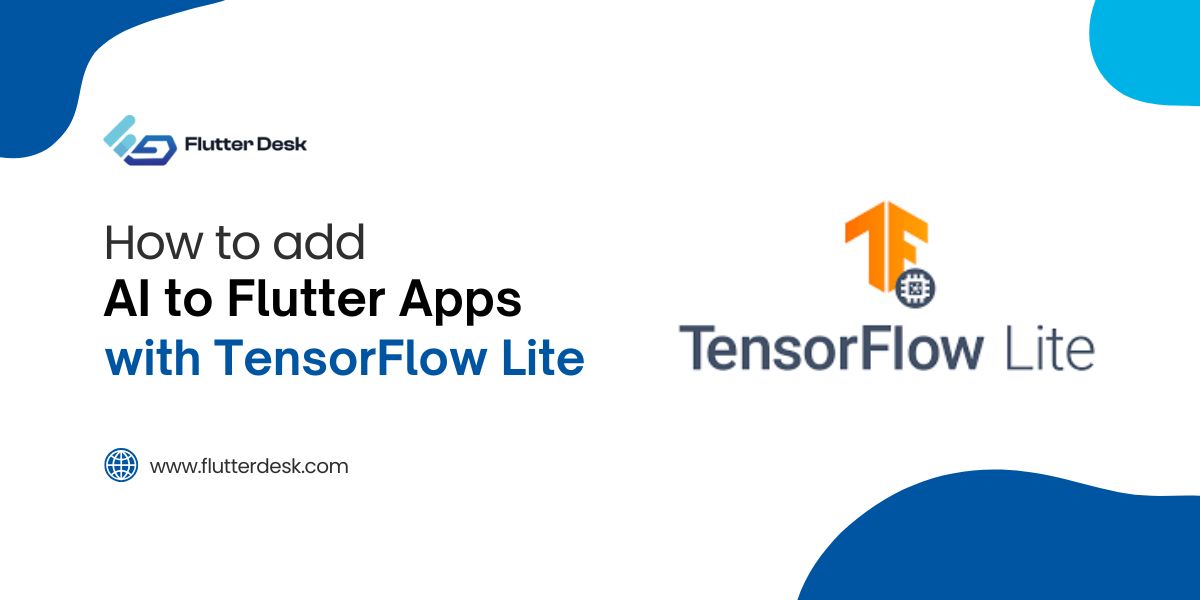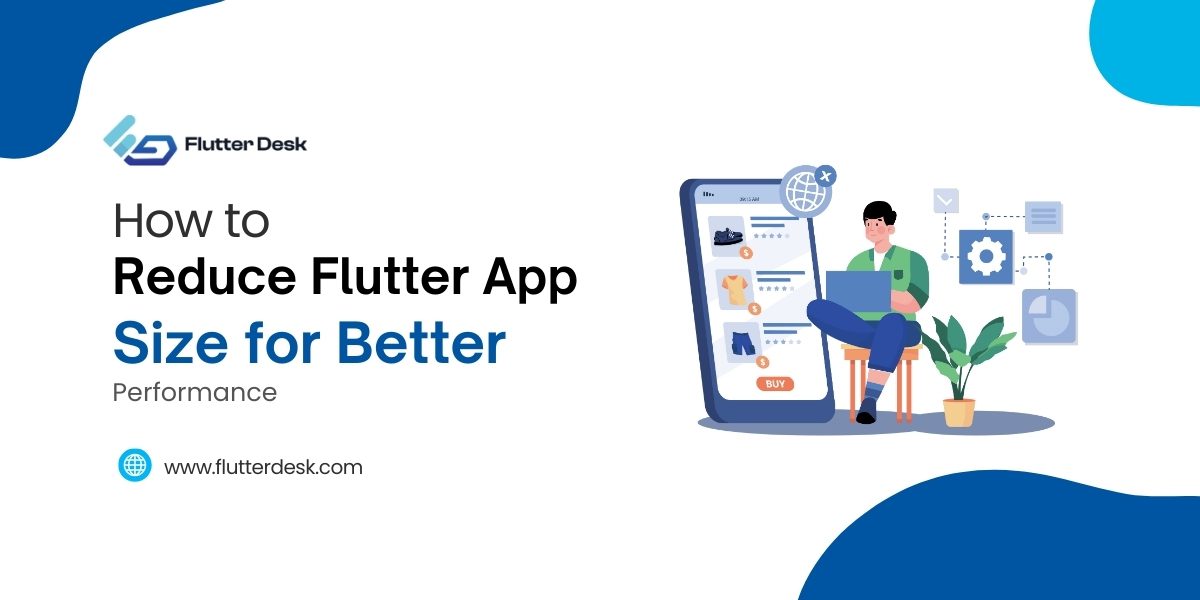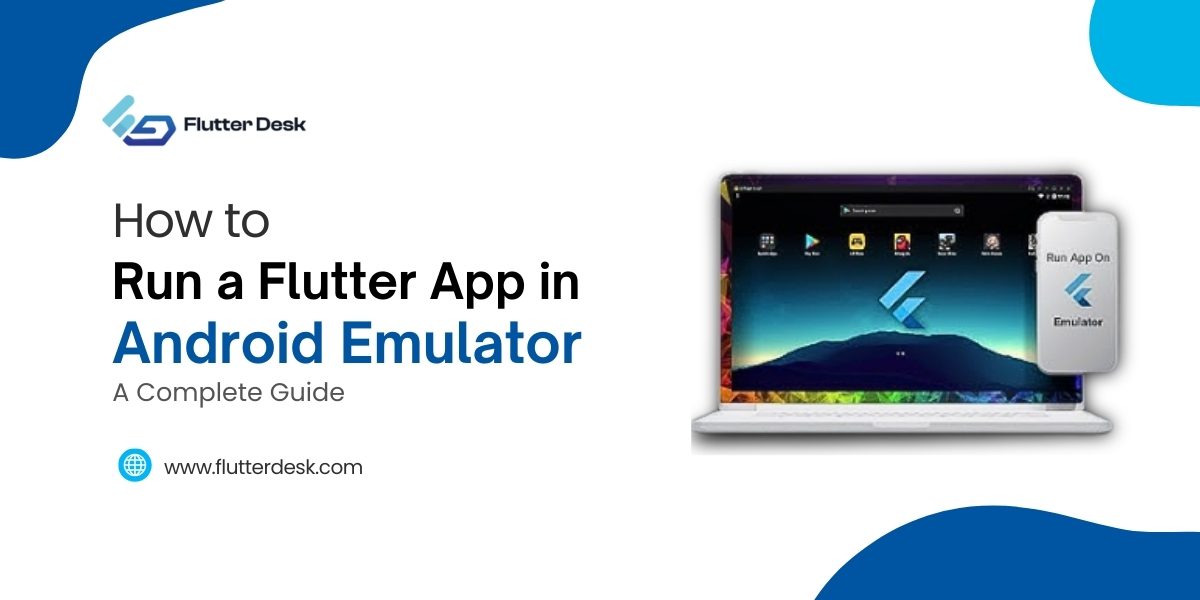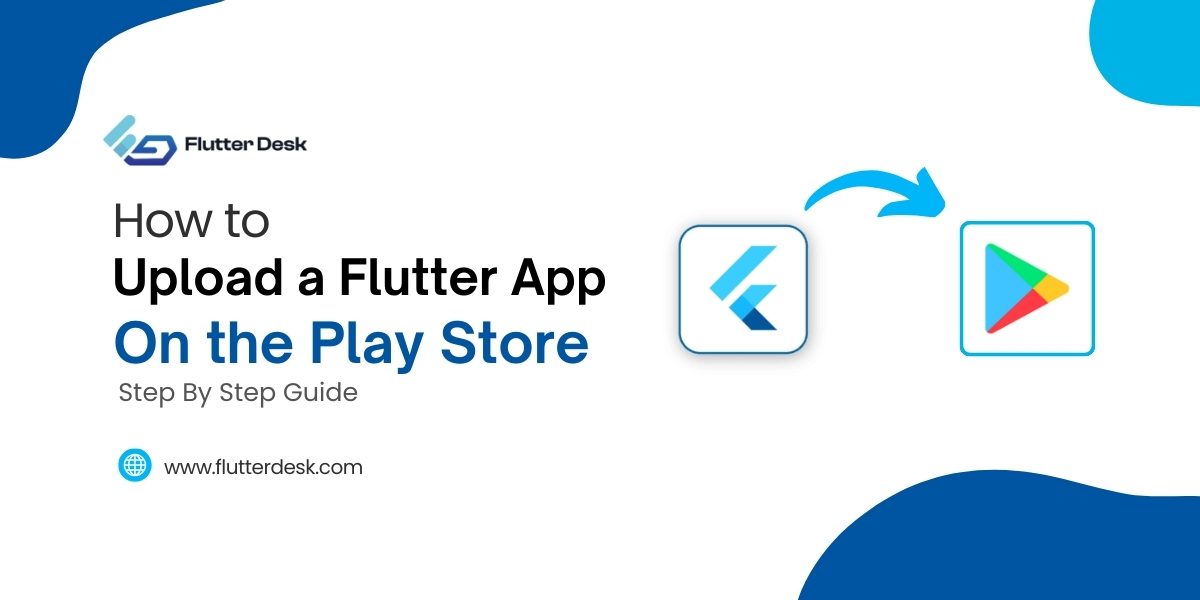Want to add smart features to your Flutter app? TensorFlow Lite makes it possible. You can build apps that recognize images, detect objects, and understand text – all without an internet connection. This guide shows you exactly how to integrate TensorFlow Lite into Flutter. You’ll learn everything from basic setup to advanced tricks that make your apps faster and smarter.
Why TensorFlow Lite Works Great with Flutter
TensorFlow Lite is Google’s lightweight machine learning tool. It’s designed specifically for phones and tablets. When you combine it with Flutter, magic happens.
Think about it this way. Regular TensorFlow is like a massive desktop computer. TensorFlow Lite is like a powerful smartphone. It does the same job but fits in your pocket.
Flutter already lets you build for both Android and iOS at once. Add TensorFlow Lite, and now your app can think too. Your users get smart features on both platforms without you writing separate code.
What Makes This Combo Special
Speed matters in mobile apps. Nobody wants to wait for the cloud to process their photo. TensorFlow Lite runs directly on the user’s phone. No waiting for servers. No worrying about bad internet.
Privacy is huge these days. When your app processes data locally, users feel safer. Their photos never leave their device. Their personal information stays private.
Battery life improves, too. Cloud processing drains batteries fast. Local processing is much more efficient. Your app becomes the good guy that doesn’t kill phone batteries.
The apps feel more responsive. Camera apps can analyze images in real-time. Translation apps work instantly. Gaming apps react to player movements without delay.
Getting Started: Setting Up Your Project
Setting up TensorFlow Lite in Flutter is straightforward. You just need to add the right packages and configure a few settings.
Adding the Required Packages
Open your pubspec.yaml file. Add these two lines under dependencies:
dependencies: tflite_flutter: ^0.10.4 tflite_flutter_helper: ^0.3.1
The main package gives you TensorFlow Lite functionality. The helper package makes common tasks easier. Think of it as your toolkit for preprocessing images and handling results.
Run flutter pub get after adding these packages. Flutter will download everything you need.
Setting Up Android
Android needs a few tweaks to work with machine learning. Open android/app/build.gradle. Make sure your minimum SDK is at least 21.
android {
compileSdkVersion 33
defaultConfig {
minSdkVersion 21
}
}
Some Android builds might strip out important code. Add these lines to prevent that:
buildTypes {
release {
shrinkResources false
minifyEnabled false
}
}
Setting Up iOS
iOS setup is simpler. Open ios/Podfile. Make sure your platform version is at least 9.0:
platform :ios, '9.0'
That’s it for iOS. The platform handles most TensorFlow Lite requirements automatically.
Adding Your Model Files
Create a folder called assets/models/ in your project root. This is where your AI models will live.
Add this section to your pubspec.yaml:
flutter:
assets:
- assets/models/
Now Flutter knows to include your models when building the app.
Understanding Different Types of Models
TensorFlow Lite supports many types of AI models. Each type solves different problems. Let’s look at the most popular ones.
Image Classification Models
These models look at pictures and tell you what’s in them. They might say “dog,” “car,” or “pizza.”
MobileNet is a popular choice. It’s fast and works well on phones. You can use pre-trained versions or train your own.
Image classifiers work great for:
- Photo organizing apps
- Plant identification tools
- Food logging applications
- Quality control systems
Object Detection Models
Object detection goes further than classification. These models find objects and draw boxes around them. They can spot multiple things in one image.
YOLO and SSD MobileNet are common choices. They balance speed with accuracy well.
Object detection powers:
- Augmented reality apps
- Security cameras
- Inventory management
- Sports analysis tools
Text and Language Models
These models understand and process text. They can translate languages, analyze sentiment, or answer questions.
BERT models work well for text classification. Smaller versions run fine on mobile devices.
Text models enable:
- Real-time translation
- Content moderation
- Smart keyboards
- Document analysis
Building Your First ML-Powered Flutter App
Let’s build a simple image classifier. This example shows the core concepts you’ll use in any TensorFlow Lite Flutter app.
Loading Your Model
Create a service class to handle model operations:
import 'package:tflite_flutter/tflite_flutter.dart';
class ImageClassifier {
Interpreter? _interpreter;
List<String> _labels = [];
Future<void> loadModel() async {
try {
_interpreter = await Interpreter.fromAsset('models/mobilenet.tflite');
_labels = await _loadLabels('assets/labels.txt');
print('Model loaded successfully');
} catch (e) {
print('Error loading model: $e');
}
}
Future<List<String>> _loadLabels(String path) async {
final labelsData = await DefaultAssetBundle.of(context).loadString(path);
return labelsData.split('\n');
}
}
This code loads both the model and its labels. Labels tell you what each prediction number means.
Preparing Images for Analysis
Models expect images in specific formats. Usually, they want 224×224 pixel images with values between 0 and 1.
import 'dart:typed_data';
import 'package:image/image.dart' as img;
List<List<List<num>>> preprocessImage(Uint8List imageBytes) {
// Decode the image
img.Image? image = img.decodeImage(imageBytes);
if (image == null) return [];
// Resize to 224x224
img.Image resized = img.copyResize(image, width: 224, height: 224);
// Convert to the format the model expects
List<List<List<num>>> input = [];
for (int y = 0; y < 224; y++) {
List<List<num>> row = [];
for (int x = 0; x < 224; x++) {
int pixel = resized.getPixel(x, y);
row.add([
img.getRed(pixel) / 255.0,
img.getGreen(pixel) / 255.0,
img.getBlue(pixel) / 255.0,
]);
}
input.add(row);
}
return input;
}
Running Predictions
Now you can analyze images:
Future<Map<String, double>> classifyImage(Uint8List imageBytes) async {
if (_interpreter == null) {
throw Exception('Model not loaded');
}
// Prepare the image
var input = preprocessImage(imageBytes);
if (input.isEmpty) return {};
// Create output tensor
var output = List.filled(1000, 0.0).reshape([1, 1000]);
// Run inference
_interpreter!.run([input], [output]);
// Process results
List<double> probabilities = output[0];
Map<String, double> results = {};
for (int i = 0; i < probabilities.length; i++) {
if (probabilities[i] > 0.1) { // Only show confident predictions
results[_labels[i]] = probabilities[i];
}
}
return results;
}
Building the UI
Create a simple interface for testing:
class ImageClassifierPage extends StatefulWidget {
@override
_ImageClassifierPageState createState() => _ImageClassifierPageState();
}
class _ImageClassifierPageState extends State<ImageClassifierPage> {
final ImageClassifier _classifier = ImageClassifier();
Map<String, double> _results = {};
bool _isLoading = false;
@override
void initState() {
super.initState();
_classifier.loadModel();
}
Future<void> _pickAndClassifyImage() async {
final picker = ImagePicker();
final XFile? image = await picker.pickFromGallery();
if (image != null) {
setState(() => _isLoading = true);
final bytes = await image.readAsBytes();
final results = await _classifier.classifyImage(bytes);
setState(() {
_results = results;
_isLoading = false;
});
}
}
@override
Widget build(BuildContext context) {
return Scaffold(
appBar: AppBar(title: Text('Image Classifier')),
body: Column(
children: [
ElevatedButton(
onPressed: _pickAndClassifyImage,
child: Text('Pick Image'),
),
if (_isLoading) CircularProgressIndicator(),
if (_results.isNotEmpty)
Expanded(
child: ListView.builder(
itemCount: _results.length,
itemBuilder: (context, index) {
final entry = _results.entries.elementAt(index);
return ListTile(
title: Text(entry.key),
trailing: Text('${(entry.value * 100).toStringAsFixed(1)}%'),
);
},
),
),
],
),
);
}
}
Making Your App Faster
Speed matters in mobile apps. Users expect instant results. Here are proven ways to make your TensorFlow Lite app lightning fast.
Use GPU Acceleration
Modern phones have powerful graphics chips. TensorFlow Lite can use them to speed up predictions.
Future<void> loadModelWithGPU() async {
final gpuDelegate = GpuDelegate();
final options = InterpreterOptions()..addDelegate(gpuDelegate);
_interpreter = await Interpreter.fromAsset('models/mobilenet.tflite', options: options);
}
GPU acceleration works best with image models. Text models usually run fine on the CPU.
Process Images in Background
Don’t block the main thread with heavy processing. Use Flutter’s compute function:
Future<Map<String, double>> classifyImageAsync(Uint8List imageBytes) async {
return await compute(_classifyImageBackground, imageBytes);
}
static Map<String, double> _classifyImageBackground(Uint8List imageBytes) {
// All the heavy processing happens here
// UI stays responsive
}
Cache Results When Possible
If users might analyze the same image twice, cache the results:
final Map<String, Map<String, double>> _cache = {};
Future<Map<String, double>> classifyWithCache(Uint8List imageBytes) async {
final hash = imageBytes.hashCode.toString();
if (_cache.containsKey(hash)) {
return _cache[hash]!;
}
final results = await classifyImage(imageBytes);
_cache[hash] = results;
return results;
}
Choose the Right Model Size
Bigger models are more accurate but slower. Smaller models are faster but less precise. Find the sweet spot for your app.
MobileNetV2 comes in different sizes:
- 0.35x: Very fast, okay accuracy
- 0.5x: Fast, good accuracy
- 1.0x: Slower, excellent accuracy
- 1.4x: Slowest, best accuracy
Test different versions to see what works best.
Real-World Examples
Let’s look at how real companies use TensorFlow Lite in Flutter apps.
Photo Management Apps
Google Photos uses similar technology to organize pictures automatically. The app can:
- Group photos by people
- Sort by objects and scenes
- Find specific items quickly
- Create automatic albums
Implementation involves running face detection and object classification on uploaded photos. Results get stored locally for privacy.
Shopping Apps
Retail apps use visual search to help customers find products:
- Point the camera at items to find similar products
- Scan barcodes for price comparisons
- Try on clothes virtually
- Check product authenticity
These features work entirely offline once the models download.
Health and Fitness Apps
Medical apps analyze images for health insights:
- Skin condition monitoring
- Posture correction during workouts
- Calorie counting from food photos
- Medication identification
Privacy is crucial here. On-device processing keeps medical data secure.
Educational Apps
Learning apps use AI to enhance education:
- Math problem solving from photos
- Language translation in real-time
- Plant and animal identification
- Historical landmark information
Students can learn anywhere without internet access.
Common Problems and Solutions
Every developer hits roadblocks. Here are the most common TensorFlow Lite issues and how to fix them.
Model Won’t Load
Problem: App crashes when loading models.
Solution: Check these items:
- Model file exists in the assets folder
- File listed correctly in pubspec.yaml
- Model format is .tflite (not .pb or .h5)
- File isn’t corrupted
Predictions Look Wrong
Problem: The Model gives strange results.
Solution: Usually an input format issue:
- Check image preprocessing steps
- Verify input tensor shape matches model expectations
- Ensure pixel values are normalized correctly (0-1 or -1 to 1)
- Confirm color channel order (RGB vs BGR)
App Runs Out of Memory
Problem: App crashes with memory errors.
Solution:
- Dispose of interpreters when done:
_interpreter?.close() - Process smaller images when possible
- Limit the number of models loaded simultaneously
- Use image compression before processing
Slow Performance on Older Devices
Problem: App works fine on new phones but crawls on older ones.
Solution:
- Test on minimum supported devices
- Implement a fallback for devices without a GPU
- Use smaller model variants for older hardware
- Add loading indicators for long operations
iOS Build Failures
Problem: App builds fine on Android but fails on iOS.
Solution:
- Update iOS deployment target to 9.0+
- Clean the build folder and rebuild
- Check for conflicting CocoaPods versions
- Verify Xcode is up to date
Advanced Techniques
Once you master the basics, these advanced techniques unlock more possibilities.
Custom Model Training
You don’t have to use pre-trained models. Train models specifically for your needs:
- Collect training data relevant to your app
- Use TensorFlow Model Maker for simple training
- Convert to TensorFlow Lite format
- Test thoroughly on target devices
Custom models often work better than general-purpose ones for specific tasks.
Model Quantization
Quantization makes models smaller and faster:
# Convert model to TensorFlow Lite with quantization converter = tf.lite.TFLiteConverter.from_saved_model(model_path) converter.optimizations = [tf.lite.Optimize.DEFAULT] quantized_model = converter.convert()
Quantized models use less memory and run faster. Accuracy drops slightly but usually not noticeably.
Multi-Model Architectures
Complex apps might use multiple models together:
- One model detects faces
- Another model identifies emotions
- The third model estimates age
Coordinate models carefully to avoid overwhelming device resources.
Dynamic Model Loading
Large apps can download models on demand:
Future<void> downloadModelIfNeeded(String modelName) async {
final localPath = await _getLocalModelPath(modelName);
if (!await File(localPath).exists()) {
await _downloadModel(modelName, localPath);
}
await _loadModel(localPath);
}
This keeps the app download size small while providing powerful features.
Testing Your ML Flutter App
Testing machine learning apps requires special attention. Regular unit tests aren’t enough.
Model Accuracy Testing
Create test datasets with known correct answers:
void testModelAccuracy() async {
final testImages = await loadTestDataset();
int correct = 0;
for (final testCase in testImages) {
final result = await classifyImage(testCase.imageBytes);
final topPrediction = result.entries.first.key;
if (topPrediction == testCase.expectedLabel) {
correct++;
}
}
final accuracy = correct / testImages.length;
print('Model accuracy: ${(accuracy * 100).toStringAsFixed(1)}%');
}
Aim for at least 90% accuracy on your test set.
Performance Testing
Measure inference speed on different devices:
Future<void> benchmarkModel() async {
final stopwatch = Stopwatch()..start();
for (int i = 0; i < 100; i++) {
await classifyImage(testImage);
}
stopwatch.stop();
final avgTime = stopwatch.elapsedMilliseconds / 100;
print('Average inference time: ${avgTime}ms');
}
Target under 100ms for real-time applications.
Memory Usage Testing
Monitor memory consumption during extended use:
void testMemoryUsage() async {
for (int i = 0; i < 1000; i++) {
await classifyImage(randomTestImage());
if (i % 100 == 0) {
// Force garbage collection
await Future.delayed(Duration(milliseconds: 100));
print('Completed $i iterations');
}
}
}
Memory usage should stay stable over time.
What’s Coming Next
TensorFlow Lite and Flutter keep improving. Here’s what to expect.
Better Hardware Support
New phones include dedicated AI chips. TensorFlow Lite will support more hardware accelerators. Your apps will get faster automatically.
Smaller Models
Research continues to make models more efficient. Expect models with better accuracy in smaller sizes.
Easier Training
Google is simplifying custom model creation. Soon, you’ll train models directly from phone data without complex setups.
Edge Computing Integration
Future versions might combine on-device processing with edge servers. Get the benefits of both local and cloud processing.
Wrapping Up
TensorFlow Lite transforms ordinary Flutter apps into intelligent experiences. Users get AI features that work fast, protect privacy, and function offline.
Start with simple image classification. Once comfortable, explore object detection and text processing. Each project teaches valuable lessons.
The key is starting small and building up. Don’t try to build the next Google Photos on your first attempt. Master the basics first.
Remember these core principles:
- Test on real devices early and often
- Optimize for your specific use case
- Keep the user experience smooth
- Respect user privacy
The future belongs to apps that understand their users. TensorFlow Lite in Flutter gives you the tools to build that future today.
Your users will love apps that work without internet, respond instantly, and keep their data private. That’s the power of on-device machine learning.
Start building. The possibilities are endless.










